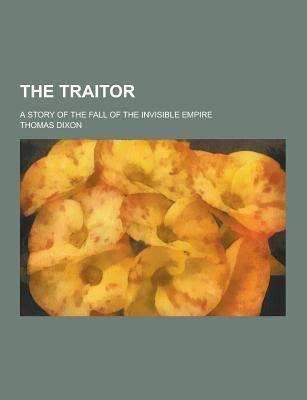Authors Publisher Doubleday, Page Pages 331 | Language English Publication date 1907 Originally published 1907 Page count 331 | |
 | ||
Similar The Leopard's Spots, TRAITOR A STORY OF THE FAL, The Life Worth Living: A, The Clansman (Volume, The Southerner: A Roman | ||
The Traitor: A Story of the Fall of the Invisible Empire is a 1907 novel by Thomas Dixon, Jr..
Contents
Plot summary
John Graham, a Confederate veteran and dispossessed planter, serves as the Grand Dragon of the Ku Klux Klan in North Carolina. As black power has been curtailed, the Grand Wizard orders Graham to have one last march through town and finally discontinue their activities. The Klan members burn their robes and bury them in a grave. Two weeks later, Graham's rival, Steve Hoyle starts a new Ku Klux Klan.
Critical reception
The novel is the third part in a trilogy about the Ku Klux Klan during Reconstruction. The two previous instalments were The Leopard's Spots, published in 1902, and The Clansman: An Historical Romance of the Ku Klux Klan, published in 1905.
Judith Jackson Fossett, an African-American Associate Professor of English, American Studies and Ethnicity at the University of Southern California, has called the novel, 'a meditation on whiteness, a contest between the 'good' Klan and the 'bad' Klan.' Indeed, this interpretation was echoed by Dixon himself, who viewed the original Ku Klu Klan as indispensable to fight back against black 'barbarism' during Reconstruction as opposed to the second Klan, which was more vengeful and violent. She added that the scene where the original Klan members burn and bury their robes is reminiscent of scenes of burials in Edgar Allan Poe's fiction. Moreover, she suggested it paralleled the natural shedding of skin by snakes.
Andrew Warnes, a Reader in American Studies at Leeds University in England, suggested the depictions of the mob mentality of the Ku Klux Klan in Richard Wright's novels were influenced by The Traitor.
